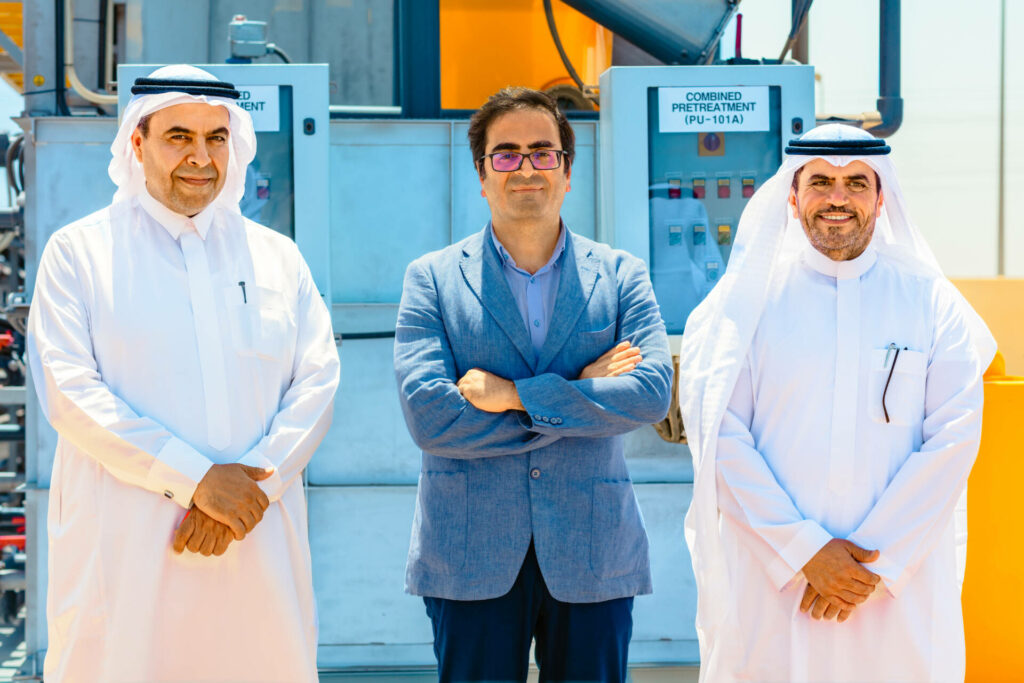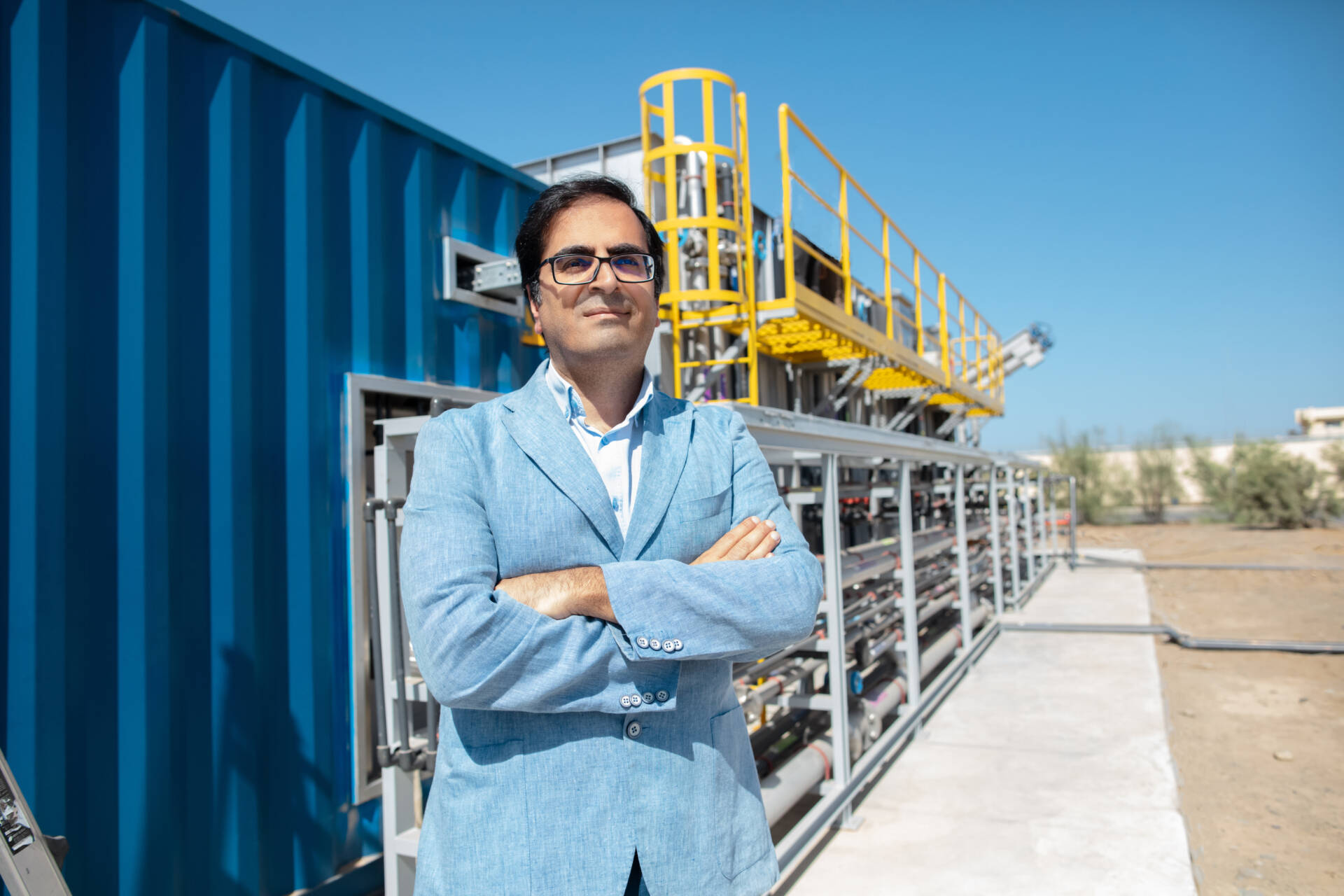A novel wastewater treatment technology has been developed to serve the around 40 percent of households that are currently in unsewered areas of Saudi Arabia.
Working with KAUST Innovation and the National Water Company, researchers Pascal Saikaly from KAUST and Muhammad Ali, KAUST alumni now at Trinity College Dublin, have deployed the first full-scale demonstration of the technology at National Water Company’s wastewater treatment site in Rabigh.
This project is one of several initiatives within the national transformation program of Saudi Arabia’s Vision 2030. These initiatives aim to upgrade water and wastewater services to boost water resources, through strengthening distribution and treatment infrastructure, and establish electronic operation and management.
Households not connected to the centralized wastewater network generate wastewater that must be collected and transported to centralized treatment plants by truck, which is costly and results in traffic congestion, air pollution and emission of greenhouse gas.
“Our wastewater technology is an innovative and efficient approach that offers several unique features compared with conventional wastewater treatment methods,” says Ali.
The decentralized unit can treat 150 cubic meters of wastewater, serving about 1000–1500 people. The system has a significantly smaller footprint and lower operational cost than conventional wastewater treatment processes. Plus, it can produce water of reliable quality for applications such as irrigation, horticulture and industry.
“The system has a significantly smaller footprint and lower operational cost than conventional wastewater treatment processes.”
“The system is producing high-quality treated effluent that meets the regulatory standards for discharge into waters or reuse for certain nonpotable applications,” reports Ali. “We will monitor the treated effluent quality at Rabigh for the next three months before starting any reuse application.”
The innovative technology combines biological treatment with a gravity-driven membrane filtration process.
“By integrating these processes, the system can achieve a high level of treatment efficiency while minimizing the use of energy and chemicals,” says Ali. It also produces 50 percent less excess sludge than a conventional treatment process.
The researchers say the technology is highly efficient in removing pollutants from wastewater, including nutrients such as nitrogen and phosphorus.
As part of Vision 2030, Saudi Arabia has a target to increase the reuse of treated sewage effluent from the current 25 percent to 70 percent.
“The Ministry of Environment, Water and Agriculture (MEWA) is happy to support local innovation that will bring benefit to the Kingdom and beyond,” says Deputy Minister for Water at MEWA, Abdul Aziz bin Muhareb Al-Shaibani.
“As part of Saudi Vision 2030, it is important that every household should have access to sanitation and this technology will hopefully play an important role in achieving that vision.”

The new technology is suitable for small (1,000 people) to medium-size (10,000 people) communities. It can be installed in areas where space is limited and its modular nature allows for easy expansion as a community grows or as treatment needs change.
Following the trial at Rabigh, the technology could be deployed in other parts of Saudi Arabia and, eventually, other countries where water is scarce.
“We need viable alternatives for wastewater treatment and reuse that are decentralized, meaning they should both treat wastewater and provide water for reuse on site,” says Saikaly. “These technologies must be low cost, low carbon, scalable and energy efficient.”
As well as remote areas, the technology could potentially provide sustainable and cost-effective wastewater treatment solutions for other situations, including urban areas and industrial sites. The next step will be a demonstration of the system at the ancient city of AlUla.
Here, a number of aspects will be tested, as Saikaly explains: “The deployment in AlUla will focus on the technology’s robustness and resilience due to high and low tourist seasonal fluctuations in wastewater flows, as well as an assessment of effluent quality and potential reuse opportunities.”

